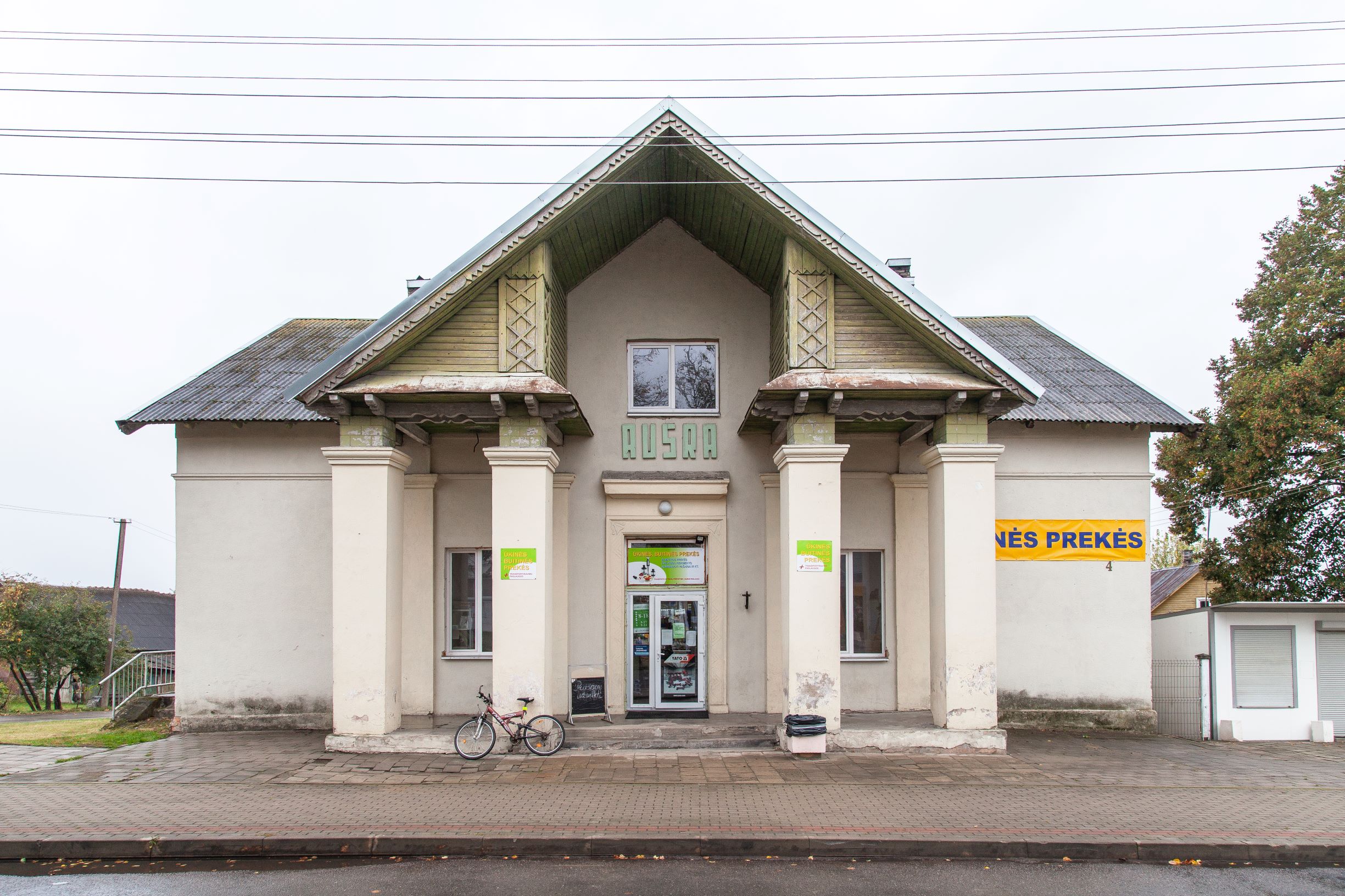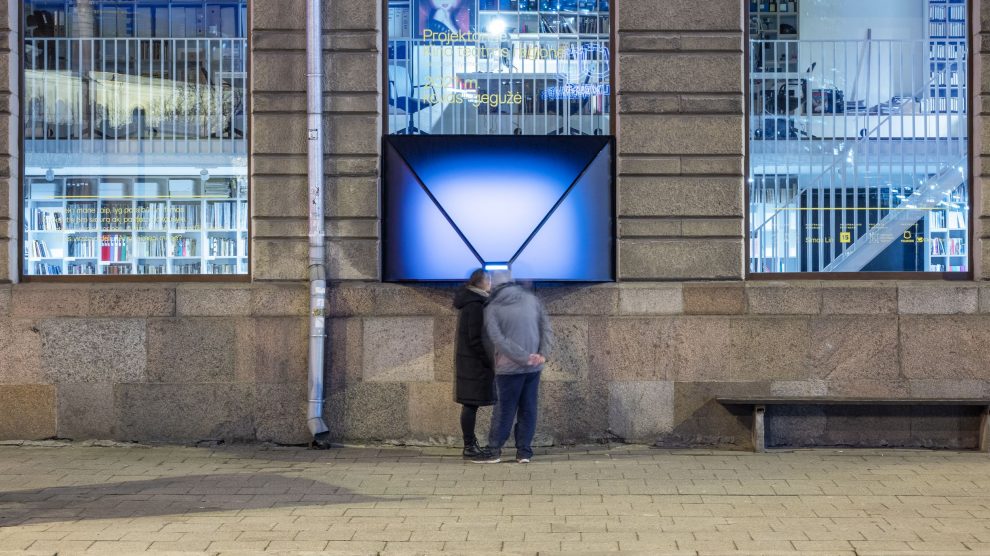A new photography installation in the Lithuanian capital Vilnius is shining a light on the fate of the country’s old picture houses.
If you look through the special binoculars installed in the window of the Planeta cinema and media space in the Lithuanian capital Vilnius, you will see photographs of 16 cinemas located in various regions of Lithuania.
You will learn about their architectural style, the year of their construction, and their present-day purpose.
- Not one, but two Oscar nods for Collective, a tale of corruption in the Romanian health system
- Why The Orator captures an important moment in Uzbek history
- The Colour of Pomegranates: One of the most unique films ever made
The photographs are part of a project being run by the Meno Avilys media education and research centre to make an inventory of Lithuania’s surviving cinemas. According to the organisers, today, more than ever before, it is extremely important to pay attention to their decreasing number, their condition; to highlight their cultural and architectural heritage.
“Following the fall of the Iron Curtain, Lithuania inherited the largest network of cinemas in the Baltic states,” says cinema historian Lina Kaminskaitė. “But the network is currently deteriorating at a rapid pace: now it is the smallest in the Baltics.”
Dr Kaminskaitė and her colleagues are now researching cinema culture in the remote areas of Lithuania.
The installation at Plenta, called The Projection Booth. Cinemas in Regions constitutes the first stage of their research and encourages viewers to take a look at the old cinema buildings in various Lithuanian towns and settlements.
“The negative influence of the Covid-19 pandemic on cinemas demonstrates the huge challenge for survival of cinemas in remote areas,” says Kaminskaitė
She adds that while analysing archive material, the team discovered a document from 1988 that listed 260 film screening venues functioning in Lithuania at that time.
Documenting the past and present
“Approximately 160 of these were cinemas, the absolute majority of which, around 140, were scattered in the regions of Lithuania and were not situated in Vilnius or Kaunas. Today, out of that number, we’ve managed to discover only sixteen cinema buildings constructed in Soviet times that have not been significantly modified in terms of their original architecture, and we’ve decided to document them.”
Judging from the photographs – taken last autumn by the photographer Simonas Linkevičius, known as Simas Lin – just five cinemas were functioning according to their primary film screening purpose: Spindulys in Marijampolė, Dainava in Alytus, Minija in Gargždai, Virinta in Alanta, and Garsas in Panevėžys. Alas, demolition of the latter began this week.
The buildings of the other cinemas are now being used for a wide range of other purposes: second hand furniture shops, stores, a veterinary clinic, a casino, day and youth centres, and even a museum.

Other former cinema buildings are neglected and unused, or are being renovated.
The facades and interiors of these buildings captured in the documentary photos are reminiscent of paused film frames. Unscripted signs of present-day life supplement the feeling of nostalgia palpable in the pictures.
The binocular installation nevertheless points to an important link between film culture and infrastructure. All of these buildings speak not only of technological or ideological changes but also of the changes in the locations where they are situated and the surrounding local communities.
Call for contributions
That is exactly why representatives of Meno Avilys are encouraging people to make a contribution to their research by sharing with the them their memories, photos or other artefacts from the cinemas in the regions of Lithuania.
Meanwhile, the installation in the window of Planeta will be open twenty-four hours a day and viewers will be able to visit until the end of May. The Meno Avilys website also offers an extensive photo story for those who can’t make it to Vilnius.
Meno Avilys is a non-governmental organisation operating independently in the sphere of film and audiovisual media, established in 2005 by a group of like-minded people.
The centre takes care of media education and the knowledge of cinema culture, organises screenings of unconventional films, promotes discussions and informal conversations, helps filmmakers to develop and create their debut works. Meno Avilys protects and highlights audiovisual heritage, promotes gender equality in the film industry through various conducted research, and offers space for less-heard voices in the area of cinema culture.
For the second stage of their current project, the Meno Avilys team’s goal is to investigate the role of cinema in the history of remote Lithuanian areas as well as in the daily life of the people and their identity, Lina Kaminskaitė tells Emerging Europe.
“We will collect and identify archival material such as amateur films, periodicals, published and unpublished memoirs, as well as visual sources including posters, postcards, photographs, and oral history.”
Photos by Simas Lin, courtesy Meno Avilys.
Unlike many news and information platforms, Emerging Europe is free to read, and always will be. There is no paywall here. We are independent, not affiliated with nor representing any political party or business organisation. We want the very best for emerging Europe, nothing more, nothing less. Your support will help us continue to spread the word about this amazing region.
You can contribute here. Thank you.







[…] Source link : https://emerging-europe.com/after-hours/the-installation-placing-lithuanias-old-cinema… Author : Publish date : 2021-03-27 00:01:23 Copyright for syndicated content belongs to the linked Source. Tags: CinemasemergingEuropeinstallationLithuania039splacingspotlight Previous Post […]